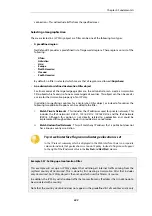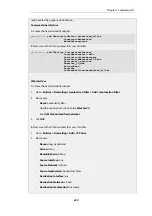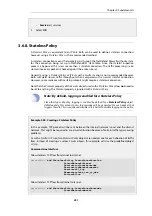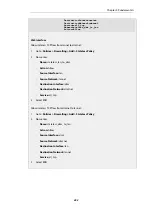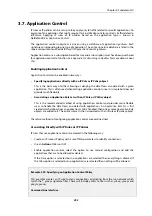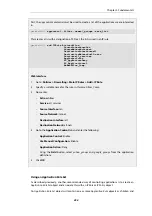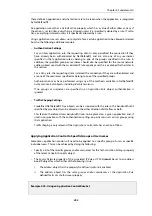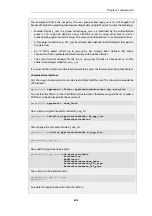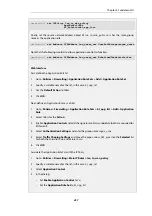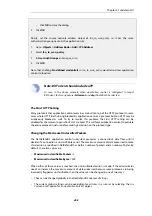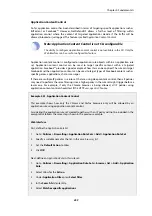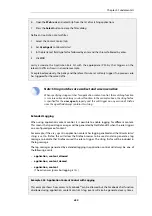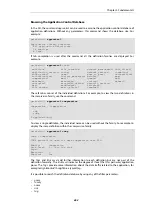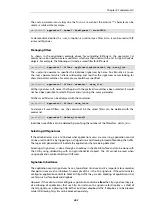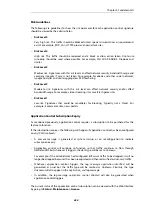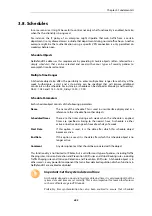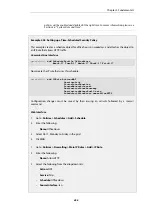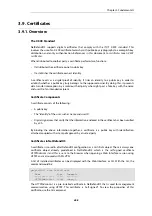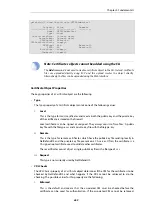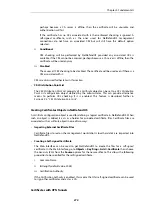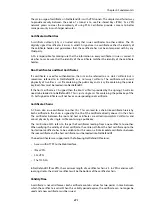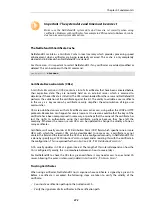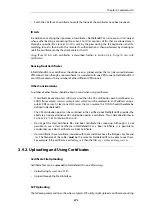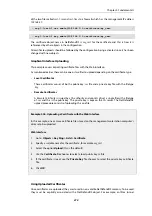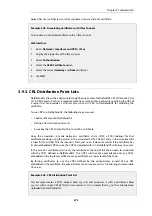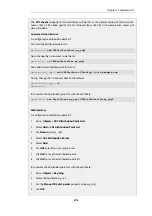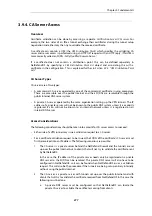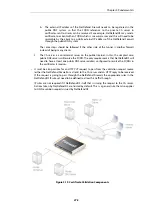
The
name
parameter must always be the first in a search but the asterisk "
*
" character can be
used as a wildcard. For example:
gw-world:/> appcontrol -name=* -family=mail -risk=HIGH
As demonstrated earlier, the
-save_list
option is used to save a filter list so it can be used with IP
rules and IP policies.
Managing Filters
As shown in the application example above for controlling BitTorrent, the
appcontrol
CLI
command is also used to create saved filters which are then used with the CLI in
ApplicationRule
objects. For example, the following will create a saved filter for BitTorrent:
gw-world:/> appcontrol -filter -application=bittorrent,utp -save_list
The
-application
parameter specifies the individual signatures by name. An alternative is to use
the
-name
parameter which allows wildcarding and searches the signatures names looking for
character pattern matches. For example, we could have specified:
gw-world:/> appcontrol -filter -name=bit* -save_list
All the signatures with names that begin with the prefix
bit
would have been selected. It would
not have been possible to select
bittorrent
and
utp
using the
-name
parameter.
All the saved filters can be displayed with the command:
gw-world:/> appcontrol -filter -show_lists
To delete all saved filters, use the command: All the saved filters can be deleted with the
command:
gw-world:/> appcontrol -delete_lists=all
Individual saved filters can be deleted by specifying the number of the filter after
-delete_lists=
.
Selecting All Signatures
If the administrators aim is to find out what applications users are accessing, application control
can be used to do this by triggering on all signatures and allowing instead of blocking the traffic.
The log events generated will indicate the applications that are being detected.
Selecting all signatures is done through a checkbox in the Web Interface and can be done with
the CLI by using wildcarding with an
ApplicationRuleSet
object. The CLI cannot be used when
using application control directly with IP rules.
Signature Inheritance
The application control signatures have a hierarchical structure and it is important to remember
that permissions are also inherited. An example of this is the
http
signature. If the administrator
configures application control to block all http traffic they are also blocking all applications that
use http such as facebook and dropbox.
However, if the administrator configures application control to allow the
http
signature they are
also allowing all applications that use http. For instance, the signature for
DropBox
is a child of
the
http
signature so allowing http traffic also allows dropbox traffic. If dropbox is to be blocked
while still allowing http, it must be blocked separately.
Chapter 3: Fundamentals
263
Summary of Contents for NetDefendOS
Page 30: ...Figure 1 3 Packet Flow Schematic Part III Chapter 1 NetDefendOS Overview 30 ...
Page 32: ...Chapter 1 NetDefendOS Overview 32 ...
Page 144: ...Chapter 2 Management and Maintenance 144 ...
Page 284: ...Chapter 3 Fundamentals 284 ...
Page 392: ...Chapter 4 Routing 392 ...
Page 419: ... Host 2001 DB8 1 MAC 00 90 12 13 14 15 5 Click OK Chapter 5 DHCP Services 419 ...
Page 420: ...Chapter 5 DHCP Services 420 ...
Page 573: ...Chapter 6 Security Mechanisms 573 ...
Page 607: ...Chapter 7 Address Translation 607 ...
Page 666: ...Chapter 8 User Authentication 666 ...
Page 775: ...Chapter 9 VPN 775 ...
Page 819: ...Chapter 10 Traffic Management 819 ...
Page 842: ...Chapter 11 High Availability 842 ...
Page 866: ...Default Enabled Chapter 13 Advanced Settings 866 ...
Page 879: ...Chapter 13 Advanced Settings 879 ...

